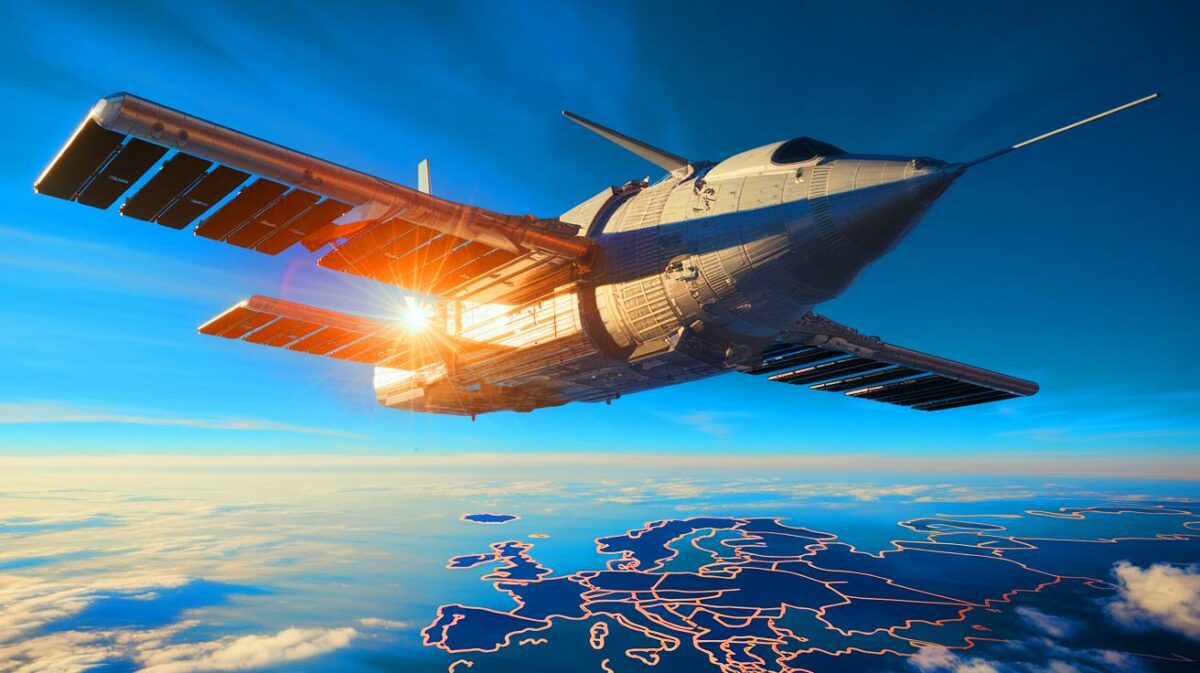| IN A NUTSHELL |
|
In recent years, the enigmatic missions of the Chinese Shenlong spaceplane have captured the curiosity of experts and enthusiasts alike. These missions, shrouded in secrecy, have now been brought to light by an unexpected discovery. Through the lens of an amateur astronomer, we gain new insights into the capabilities and objectives of this mysterious aircraft. As we delve deeper, we uncover the potential implications of these revelations on global technological and geopolitical landscapes.
The Unexpected Discovery by Felix Schöfbänker
Felix Schöfbänker, an Austrian amateur astronomer, achieved a remarkable feat by photographing the Chinese Shenlong spaceplane as it flew over Europe. Using a modified telescope, Schöfbänker captured detailed images of this secretive vehicle, providing a rare glimpse into China’s space ambitions.
World’s Lightest Drone Breakthrough: The Chinese Bi-Copter Weighs Less Than a Smartphone
The images unveiled structures at the rear of the Shenlong that were previously unknown. These could potentially be solar panels or antennas, indicating advanced autonomous capabilities. Such discoveries are crucial, as they offer a better understanding of the technology China employs for its clandestine space missions. Through Schöfbänker’s lens, we gain an invaluable perspective on the technological prowess behind the Shenlong, shedding light on its potential functions and objectives.
Features and Missions of Shenlong
The Shenlong, meaning “Divine Dragon” in Chinese, measures approximately 33 feet in length, making it slightly larger than its American counterpart, the X-37B. This unmanned vehicle is designed for long-duration missions in orbit, sparking intense interest and speculation about its capabilities. Western analysts remain in the dark regarding its precise functions, as the missions of this spaceplane are enveloped in mystery, fueling theories about its true objectives.
In a recent mission, the Shenlong deployed an object into orbit and performed complex maneuvers to approach it again. Such actions suggest that China is testing satellite inspection or capture technologies. These developments hint at the possible future roles the Shenlong might play in space exploration and military strategy.
| 🚀 Discovery | Photograph of Shenlong in Europe by Felix Schöfbänker |
|---|---|
| 📏 Size | Approximately 33 feet in length |
| 🕵️ Missions | Long-duration in orbit, secret objectives |
| 🔍 Structures | Solar panels or antennas at the rear |
- Shenlong is slightly larger than the American X-37B
- The missions remain shrouded in mystery
- Analysts speculate on its autonomous capabilities
Geopolitical and Military Implications
Western analysts closely monitor Shenlong’s activities, suspecting that this spaceplane might be used for espionage missions or neutralizing enemy satellites. This hypothesis is strengthened by the complex maneuvers observed during its recent missions. Such operations indicate that China could be testing satellite inspection or capture technologies, fueling fears of a new technological cold war between major powers.
Like the 1960s, space has once again become a crucial strategic battlefield for national defense and security. Schöfbänker’s observation did not go unnoticed in intelligence circles, which see it as a new indicator of the growing rivalry between China and the United States. The Shenlong could well be a key element in this new space arms race, prompting important questions about the lengths these two powers will go to ensure their supremacy in space.
As the mystery surrounding the Shenlong unravels, we are left to ponder the broader implications of its missions. What does the future hold for international space relations, and how might these developments shape the global landscape in the years to come?
Did you like it? 4.6/5 (25)









Wow, an amateur astronomer captured this? Props to Felix! 🎉